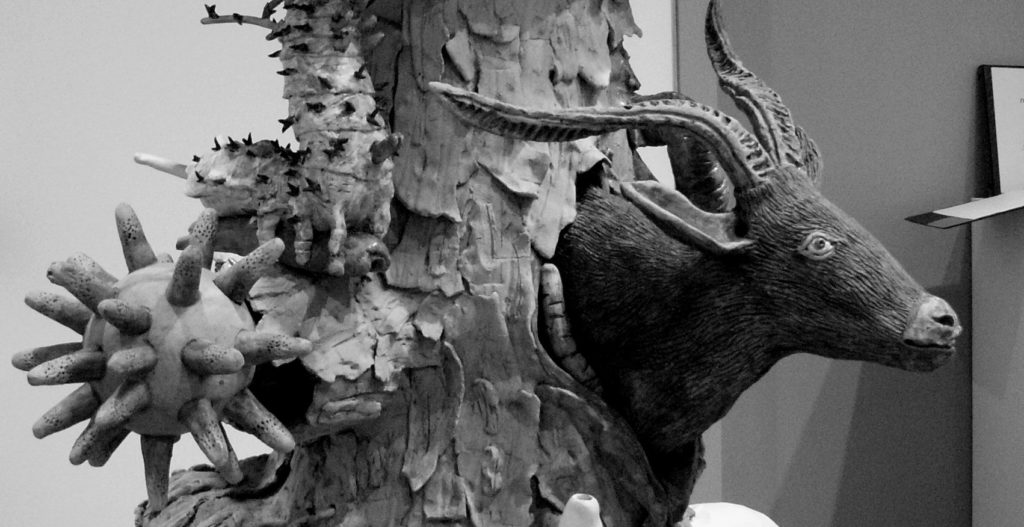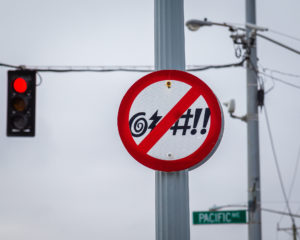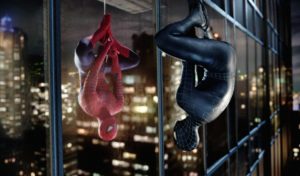Pretty pieces in ‘Politics of Place’
In Alexander Gallerys “The Politics of Place” exhibit, the theme is weak but the art is strong.

Sometimes, art is just pretty.
Such is the case with “The Politics of Place,” the new exhibit in Niemeyer’s Alexander Gallery. Though the title of the exhibit and the wall-mounted explanation by Curator Nancy McCroskey of Indiana University indicates that each piece of art is a political statement, the pleasure of the artwork is in the art, not the statement.
Dana Goodman’s “Hercules in the Garden” is easily the best piece for this very reason. In a gallery perpetually dominated by modern art, Go
odman’s work is of a more classic style. The bright colors and realistic shapes arranged in a unique manner portray a more fantastical and aesthetically pleasing form than the most extravagant modern art.

“The Rambouillet That Discovered Tomatoes,” another piece by Goodman, is also impressive in the classical sense. The sponsors of the exhibit, however, would have you believe otherwise.
“The sheep and tomato, raised by the farmer, in service to society, are displayed for our contemplation,” McCroskey’s plaque says of the piece. “Goodman asks us to consider our relationship to the earth, its produce and the animal kingdom under our care.”
It’s a stretch. Of course, so is claiming that Jamie Walker’s modernistic “Clouds” series is “a quietly portentous political and spiritual drama.”
Walker’s series is surprisingly expressive, a good example of beautiful modern art. But even McCroskey seems unable to find the political statement in it, instead relying — much as I do — on a vague use of large words to sound intellectual.
The very nature of the exhibit is frustrating. It takes the power away from the imagination. Once an artist makes something, whatever meaning he or she intended is only a small portion of the piece. It’s up to the individual to decide whether or not they see anything symbolic in it. And sometimes it’s nice to look at art and just see something pretty.
In the end, the theme of the exhibit is a resounding failure. But the art — from classic to modern to the utilization of video projection — remains nothing short of gorgeous. Just don’t read the plaque.
This review was originally published in The Clackamas Print.
Writer. Actor. Director. Chalk artist. YouTuber. Nerdfighter. Traveler. Pansexual. Genderfluid. Millennial. Socialist. Living a complex life beyond those words.








